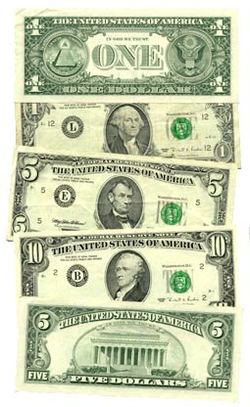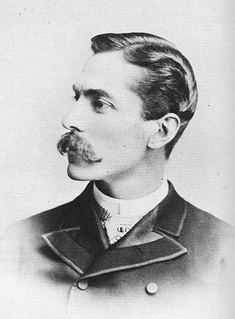
This has allowed me to wrap my head around the idea of how a few of them lost it all within a decade.
William West Durant sold the Adirondack Railroad Company for $650,000 in 1889 and that sale, along with some land sales in the Adirondacks netted him close to $1.5 million. In today's dollars that is about $40 million. A lot of money right? Why then was he broke by 1903? Could it have been that he spent it all on his $200,000 yacht? His Great Camps that he built with such fine detail and then sold at a loss? Or was it his trip around the world with his yacht in 1891-92 when he entertained royalty? Maybe it was the Panic of 1893, or a combination of all of the events I've described.
Then there is Ella Durant. Granted she was given the short end of the stick when it came to her inheritance: a measly $35,000 give or take some change. In today's dollars that is about $800,000. I imagine her brother William was wondering what she was spending it on because she also received a $200/monthly allowance and was broke within three years of receiving her inheritance.
Two hundred a month may seem like chump change now, but back then it was equivalent to about $5,000; plenty to live on in London, one would think, since monthly rent in 1890 was about $50.00 for a decent flat. That would be only one quarter of her allowance. What, I had to wonder, caused her to go broke so quickly? Was it the doctor bills that piled up from an extended illness? Her social life in London? A woman in London in the 1890s would need dresses for the opera and theater, and jewels to go along with them. I found a receipt in the archives of the University of Iowa, a bill that Ella's father Dr. Durant incurred for a diamond necklace he purchased in 1869 from Tiffany's. It was worth $1600.00. I had this much to go by. Maybe Ella treated herself to jewels and dropped a month's allowance on them.
Another potential cause of the downfall of the Durant siblings was that they were easy prey for businessmen who knew they had assets and may have enticed them to invest in risky money-making schemes, and taken advantage of their lack of business acumen. This was a familiar theme in Twain's novel The Gilded Age. To put this into context one only has to read about how J.P. Morgan the financier operated. During the Panic of 1893 he negotiated with President Cleveland to sell U.S. bonds to international bankers for gold, which at the time was being bled out of the U.S. Treasury. The bonds sold out in less than twenty-five minutes and Morgan made over $5 mil in the transaction. That $5 mil in today's dollars was worth $140 million. Yes, that's right, he made $135 mil. in twenty-five minutes. Morgan surely knew what he was doing. It is telling he bought William's Camp Uncas in 1895, William's masterpiece of Great Camp architecture, for half the amount William had spent building it. Morgan knew how to take advantage of a situation.
In the end both Ella and her brother William were risk takers; not only with their personal wealth, but also their art: William his Great Camps and Ella her writing. The Durant siblings wanted to create something, a trait they inherited, along with the money, from their father Dr. Durant. Perhaps the cost of being creative is what really did them in at the end.

 RSS Feed
RSS Feed
